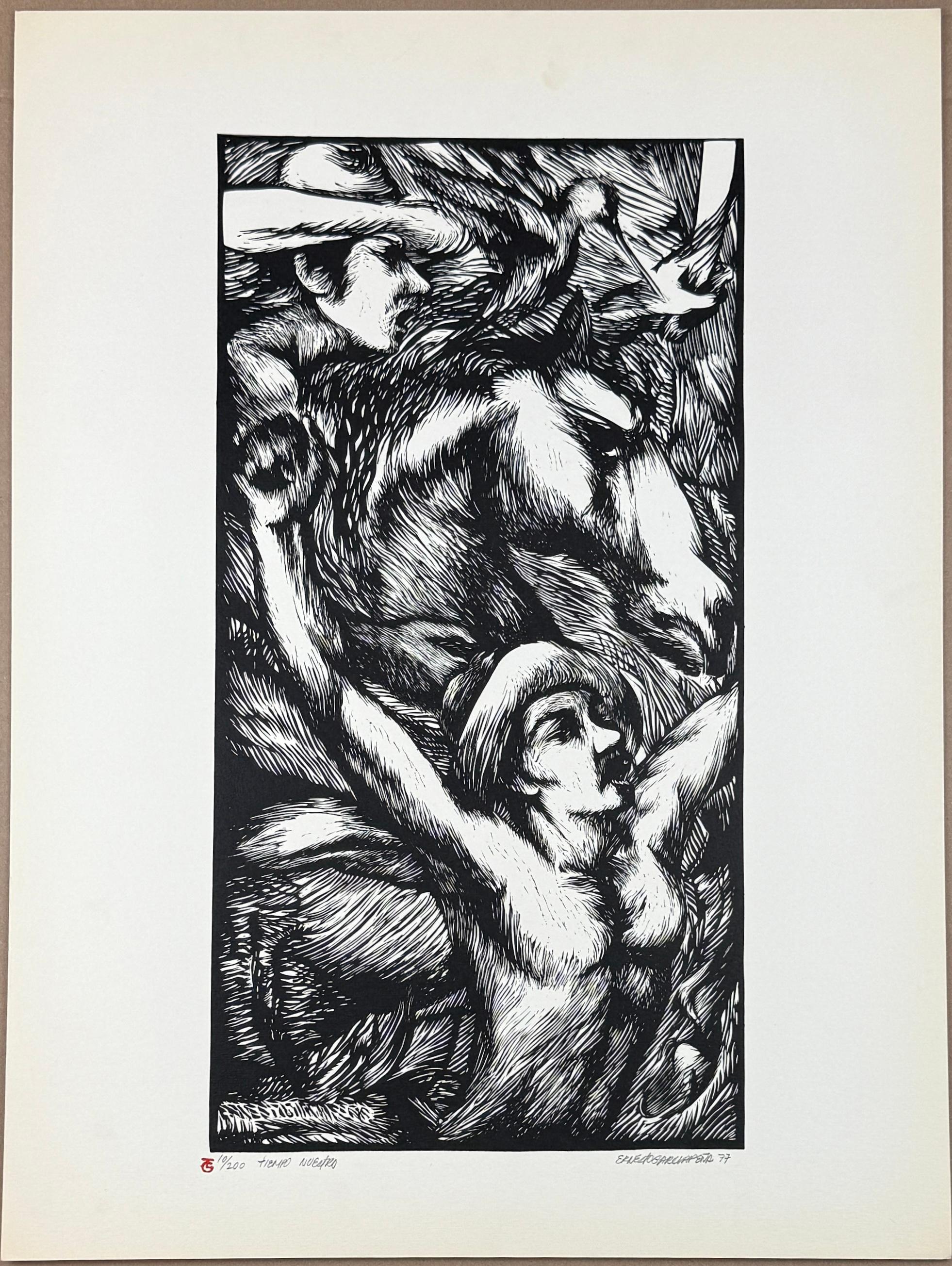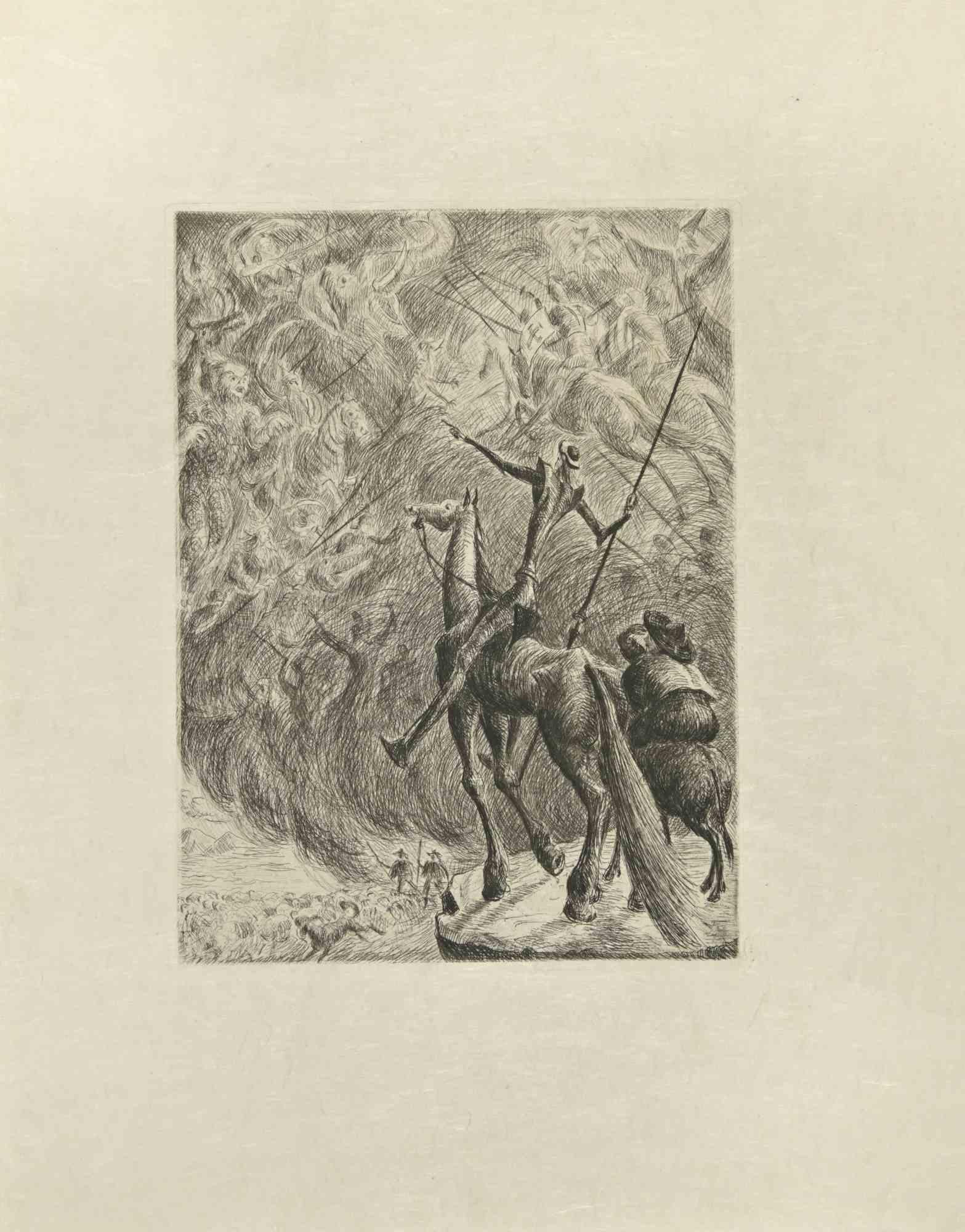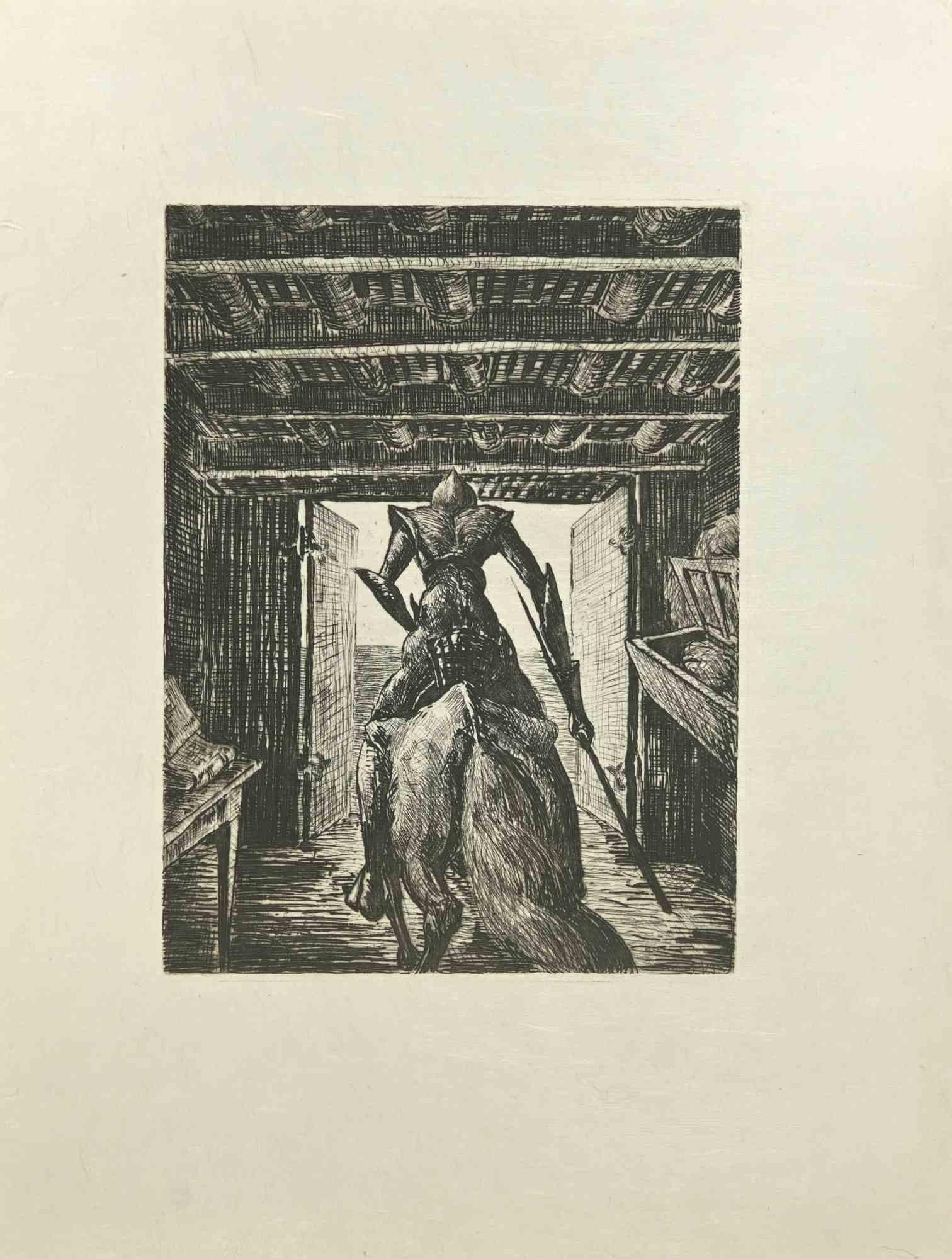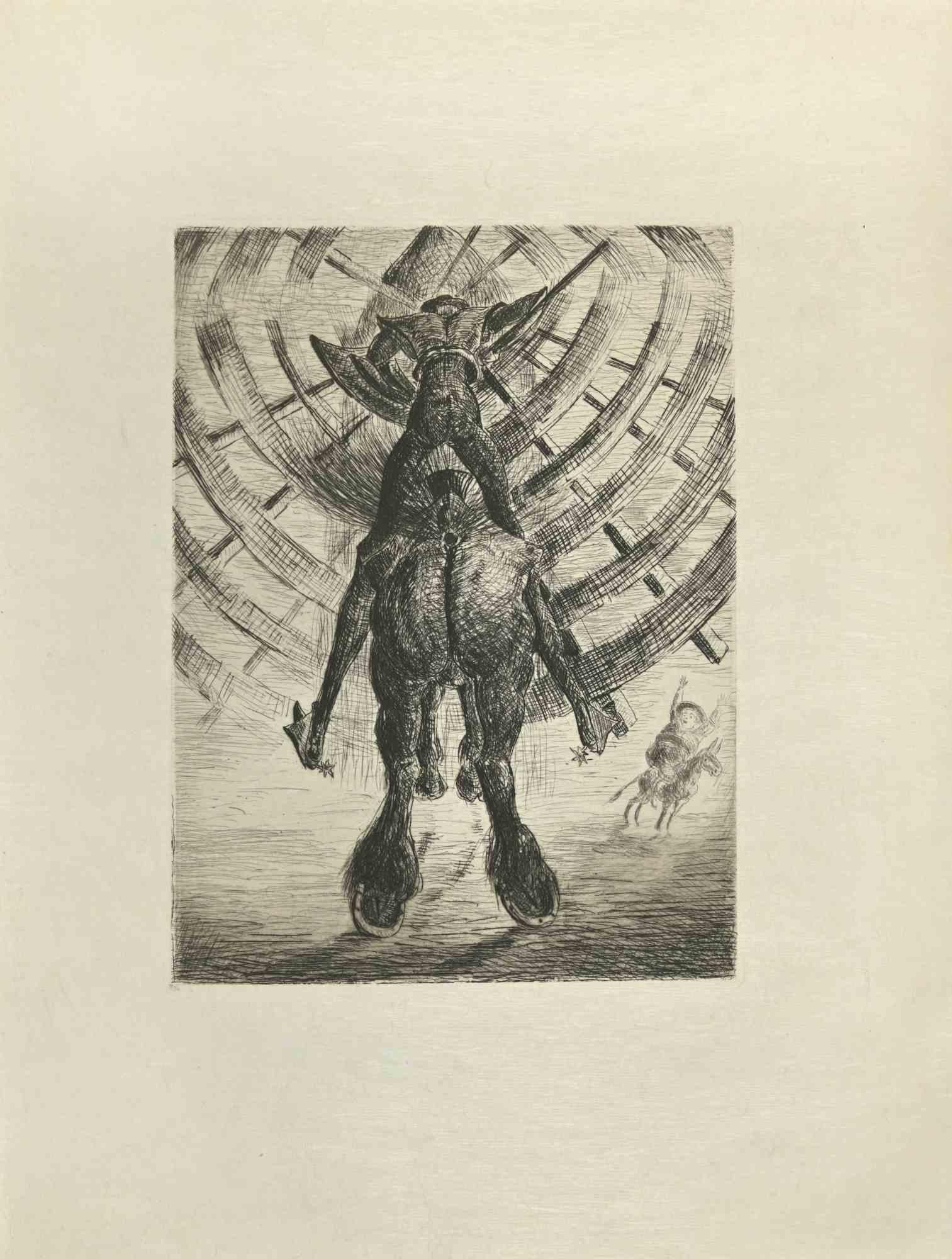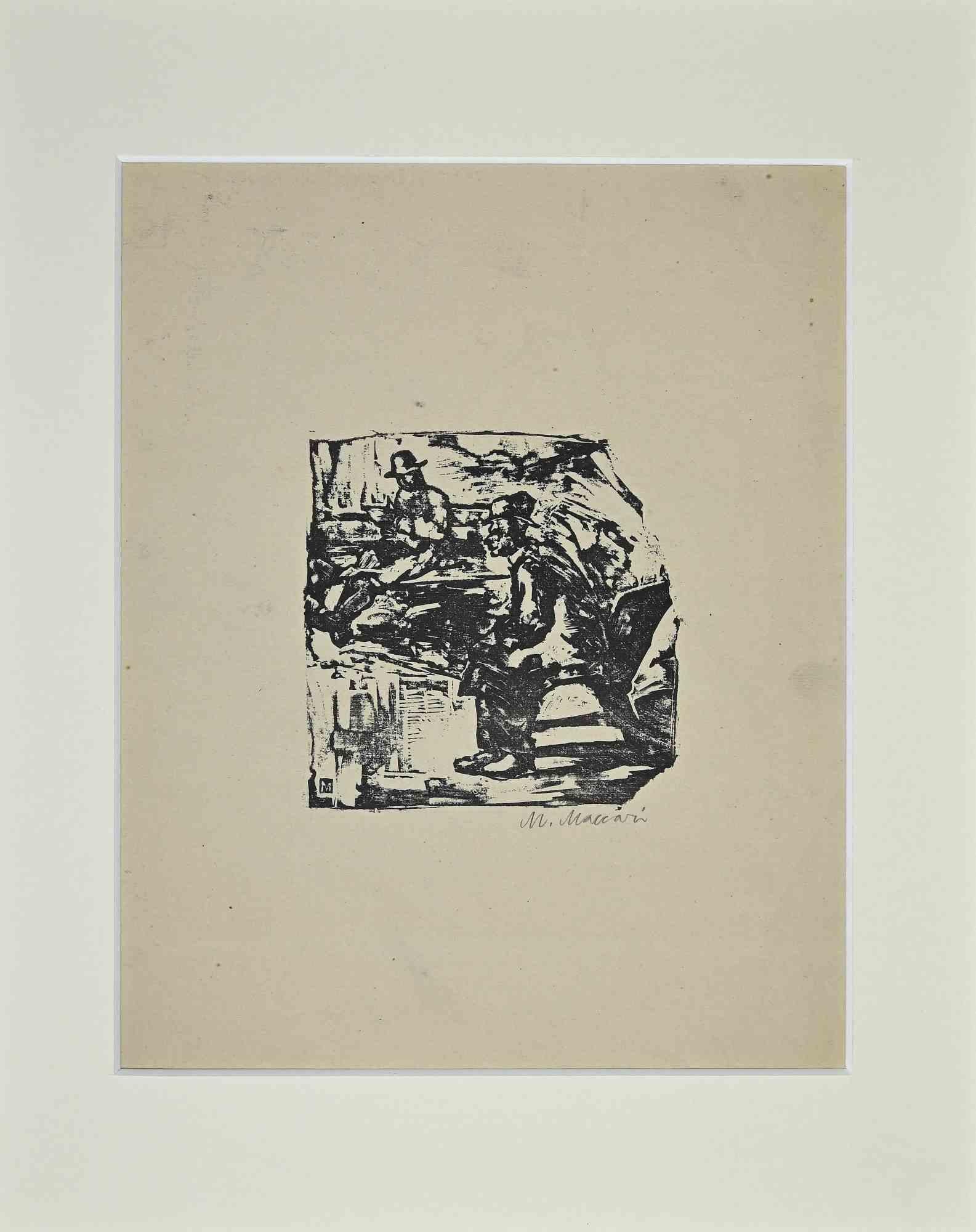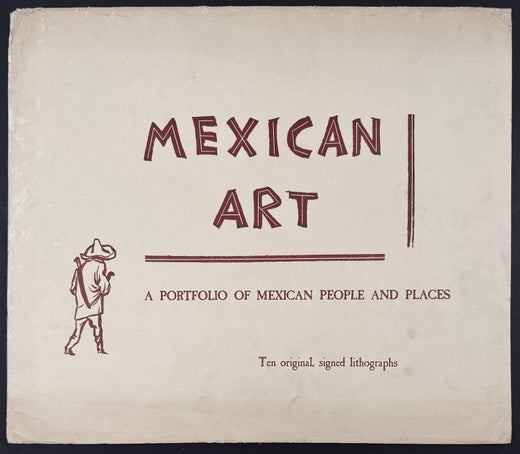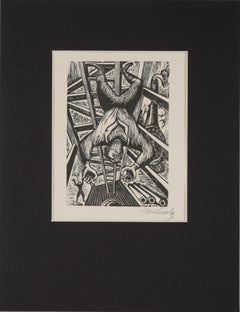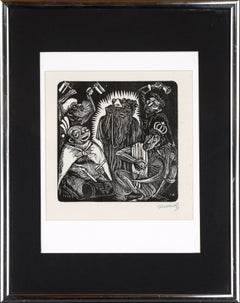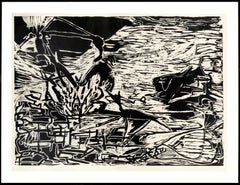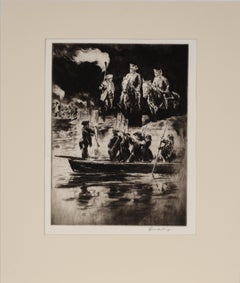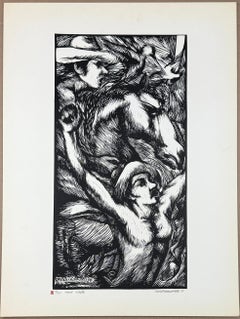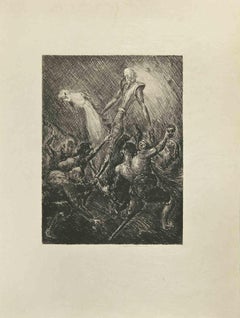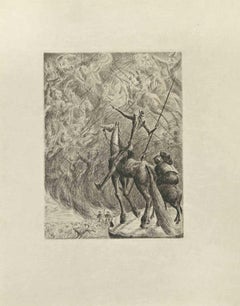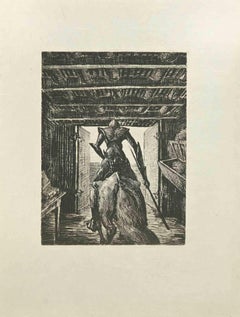Items Similar to "Charge of the Revolutionist Cavalry" - 1931 Woodcut On Paper
Want more images or videos?
Request additional images or videos from the seller
1 of 6
Leopoldo Méndez"Charge of the Revolutionist Cavalry" - 1931 Woodcut On Paper1931
1931
$720
$90020% Off
£545.54
£681.9220% Off
€625.96
€782.4520% Off
CA$1,013.16
CA$1,266.4520% Off
A$1,113.74
A$1,392.1720% Off
CHF 585.33
CHF 731.6620% Off
MX$13,524.83
MX$16,906.0420% Off
NOK 7,301.84
NOK 9,127.2920% Off
SEK 6,917.98
SEK 8,647.4720% Off
DKK 4,671.70
DKK 5,839.6220% Off
About the Item
"Charge of the Revolutionist Cavalry" - 1931 Woodcut On Paper
1931 Black and white woodcut print titled "Charge of the Revolutionist Cavalry" by Leopoldo Méndez (Mexican, 1902-1969).
Signed "Mendez" lower right.
Presented in a black mat.
Mat: 9"H x 12"W
Paper: 7.5"H x 9.5"H
Image: 5"H x 8.5"W
Leopoldo Méndez led and co-founded Mexico’s most famous printmaking collective, the Taller de Gráfica Popular (TGP) (the Popular Graphic Arts Workshop). A virtuosic printmaker himself, Méndez used his artwork to further the causes of agrarian reforms, Indigenous rights, and anti-fascism. He and the other members of the TGP initiated a tradition of activist printmaking that continues in Mexico to this day.
Méndez was born and studied art in Mexico City. In 1933, he joined the Liga de Escritores y Artistas Revolucionarios (the League of Revolutionary Writers and Artists), with whom he developed a philosophy of art as a means of activism and liberation for the people of Mexico. Soon after, in 1937, Méndez founded the Taller de Gráfica Popular, a collective of artists who made everything from ephemeral prints to high-quality illustrated books in service of leftist political reform. Méndez remained with the TGP until 1961, after which he devoted himself to publishing books on Mexican printmaking and folk art, as well as supporting leftist movements around the world, until his death in 1969.
The Art Institute of Chicago houses one of the largest North American collections of Méndez’s work and hosted a 1945 exhibition, Prints and Drawings by Leopoldo Méndez, of works acquired from the artist. Méndez created What May Come, a woodblock print commenting on the future of Mexico and the brewing World War II, specifically for that exhibition.
- Creator:Leopoldo Méndez (1902 - 1969, Mexican)
- Creation Year:1931
- Dimensions:Height: 9 in (22.86 cm)Width: 12 in (30.48 cm)Depth: 0.5 in (1.27 cm)
- Medium:
- Movement & Style:
- Period:
- Condition:Very good condition. Mat is new.
- Gallery Location:Soquel, CA
- Reference Number:Seller: N96081stDibs: LU54215904282
Leopoldo Méndez
null
About the Seller
5.0
Platinum Seller
Premium sellers with a 4.7+ rating and 24-hour response times
Established in 1986
1stDibs seller since 2014
3,000 sales on 1stDibs
Typical response time: <1 hour
- ShippingRetrieving quote...Shipping from: Soquel, CA
- Return Policy
Authenticity Guarantee
In the unlikely event there’s an issue with an item’s authenticity, contact us within 1 year for a full refund. DetailsMoney-Back Guarantee
If your item is not as described, is damaged in transit, or does not arrive, contact us within 7 days for a full refund. Details24-Hour Cancellation
You have a 24-hour grace period in which to reconsider your purchase, with no questions asked.Vetted Professional Sellers
Our world-class sellers must adhere to strict standards for service and quality, maintaining the integrity of our listings.Price-Match Guarantee
If you find that a seller listed the same item for a lower price elsewhere, we’ll match it.Trusted Global Delivery
Our best-in-class carrier network provides specialized shipping options worldwide, including custom delivery.More From This Seller
View All"Accidente" - 1943 Linocut on Paper
By Leopoldo Méndez
Located in Soquel, CA
"Accidente" - 1943 Linocut on Paper
"Accidente" from the portfolio "25 Prints of Leopoldo Méndez", depicts a figure, upside down, appearing to fall downward from a ladder. Another f...
Category
1940s Post-Modern Figurative Prints
Materials
Paper, India Ink, Linocut
God and the Four Evangelists ("Fool's Concert") - 1943 Linocut on Paper
By Leopoldo Méndez
Located in Soquel, CA
God and the Four Evangelists ("Fool's Concert") - 1943 Linocut on Paper
Leopoldo Méndez (Mexico City, Mexico, 1902–1969) "Fool's Concert" (from the portfolio "25 Prints of Leopoldo ...
Category
1940s Symbolist Figurative Prints
Materials
Linocut, Printer's Ink, Laid Paper
Large Scale Abstract Figurative Landscape Woodcut, Signed Limited Edition 1/10
By Michael Pauker
Located in Soquel, CA
Large scale limited edition woodcut print of an an abstracted scene with landscape elements and rough figural forms including a dog, house and tree that emerge from chaotic linear ab...
Category
Late 20th Century Post-War Abstract Prints
Materials
Paper, Woodcut, Ink
"The Retreat From Long Island" - 1932 Etching On Paper
By Levon West
Located in Soquel, CA
"The Retreat From Long Island" - 1932 Etching On Paper
Black and white etching titled "The Retreat from Long Island" (from the portfolio “The Bicentennial Pageant of George Washing...
Category
1930s American Impressionist Figurative Prints
Materials
Laid Paper, Etching
The British Evacuate Boston - 1932 Etching on Paper
Located in Soquel, CA
The British Evacuate Boston - 1932 Etching on Paper by Allen Lewis. From the portfolio "The Bicentennial Pageant of George Washington."
In this piece George Washington is front and ...
Category
1930s American Realist Figurative Prints
Materials
Laid Paper, Etching
$640 Sale Price
20% Off
"Horses", 1960's Pop Art Etching A/P
By Marc Foster Grant
Located in Soquel, CA
A late 1960's modern Pop Art etching of horses by Marc Foster Grant (American, b.1947). The galloping horse motif is repeated, in the style of Warhol...
Category
1960s Pop Art Animal Prints
Materials
Paper, Printer's Ink, Etching
$1,720 Sale Price
20% Off
You May Also Like
"Our time", 1977 original linocut signed limited edition 24x18in Cuban Latin art
Located in Miami, FL
Ernesto Garcia Peña (Cuba, 1949)
'Our time" (from Porfolio Grabados Cubanos)', 1977
linocut print on paper Canson 320 g.
23.6 x 17.6 in. (59.8 x 44.6 cm.)
Edition of 200
Ref: GAE-309...
Category
1970s Contemporary Animal Prints
Materials
Paper, Engraving, Etching, Aquatint, Screen, Linocut
Don Quixote Galloping - Etching by Wladyslaw Jahl - 1951
Located in Roma, IT
Don Quixote Galloping is an etching and drypoint print on ivory-colored Japanese paper, realized by Wladyslaw Jahl in 1951.
It belongs to a limited edition of 125 specimens.
Good c...
Category
1950s Contemporary Figurative Prints
Materials
Etching
Don Quixote in Battle - Etching by Wladyslaw Jahl - 1951
Located in Roma, IT
Don Quixote in Battle is an etching and drypoint print on ivory-colored Japanese paper, realized by Wladyslaw Jahl in 1951.
It belongs to a limited edition of 125 specimens.
Good c...
Category
1950s Contemporary Figurative Prints
Materials
Etching
Don Quixote Galloping - Etching by Wladyslaw Jahl - 1951
Located in Roma, IT
Don Quixote Galloping is an etching and drypoint print on ivory-colored Japanese paper, realized by Wladyslaw Jahl in 1951.
It belongs to a limited edition of 125 specimens.
Good c...
Category
1950s Contemporary Figurative Prints
Materials
Etching
Don Quixote Galloping - Etching by Wladyslaw Jahl - 1951
Located in Roma, IT
Don Quixote Galloping is an etching and drypoint print on ivory-colored Japanese paper, realized by Wladyslaw Jahl in 1951.
It belongs to a limited edition of 125 specimens.
Good c...
Category
1950s Contemporary Figurative Prints
Materials
Etching
Historical Scene - Original Woodcut Print by Mino Maccari - Mid-20th Century
By Mino Maccari
Located in Roma, IT
Historical Scene is an original print realized by Mino Maccari in the Mid-20th Century.
Beautiful black and white woodcut print on ivory-colored paper. Included a passport: 35 x 28 ...
Category
Mid-20th Century Modern Figurative Prints
Materials
Woodcut
More Ways To Browse
Shepard Fairey Lithograph
Shepard Fairey War
Signed Mucha Lithograph
Skate Decks Keith Haring
Sophy Brown
Southwest Vintage Posters
Sticky Fingers Album
Sunset Peter Max
Tammy Wynette
Tarkay Lithograph
Tessa Beaver
The Physiognomy Ear
Van Strydonck
Venus In Furs
Vintage Continental Airlines Poster
Vintage Lunch Counter
Warhol Alexander
Warhol Batman
